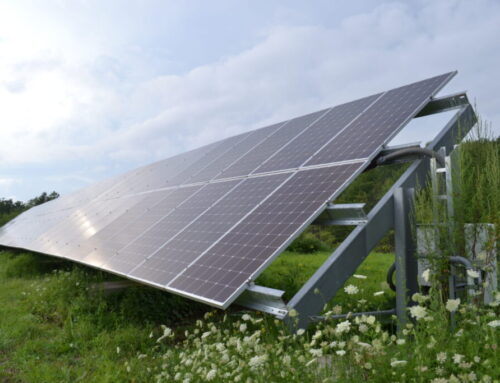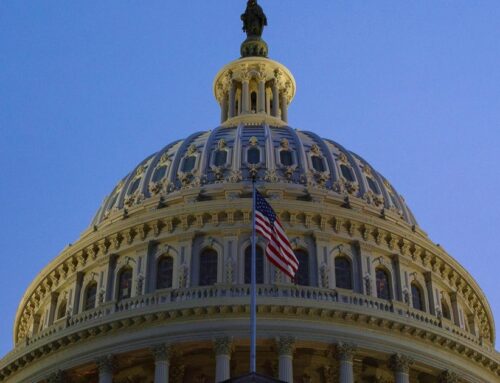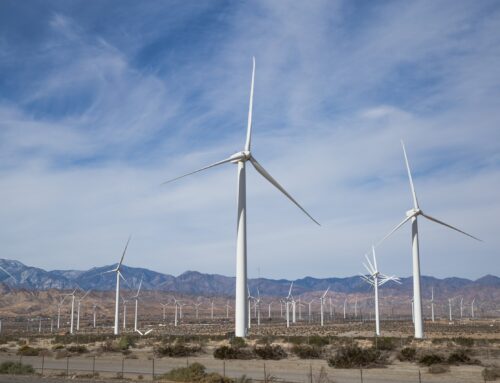Climate: Crunch Time For U.S. Clean Energy Incentives
June 30, 2025
Current Climate brings you the latest news about the business of sustainability every Monday. Sign up to get it in your inbox.
Asthe Senate struggles to pass its version of President Trump’s “Big Beautiful” budget bill that squeaked through the House of Representatives by a single vote, it’s increasingly likely that tax credits and programs for clean energy projects won’t survive.
Fossil fuel industry lobbyists and fringe political figures have argued that the policies that helped create the fastest increase in renewable electricity generation in U.S. history are wasteful and unnecessary, even as oil and gas drillers continue to qualify for their own federal incentives. Setting aside benefits that large-scale wind, solar and battery storage project create in terms of reducing climate-warming carbon dioxide emissions, scrapping the credits created by the Biden Administration’s Inflation Reduction Act (IRA) and Bipartisan Infrastructure Law will have a devastating impact on jobs and economic development in much of the U.S., particularly Republican-leaning states that have been the top beneficiaries of those projects.
The revised bill that could be voted on in the Senate today quickly phases out nearly all existing clean energy credits by as early as 2027, and even adds a new tax on large solar and wind projects. It’s worse than an earlier draft that the American Clean Power Association had said would “increase household electricity bills and threaten hundreds of thousands of jobs across the country.”
If passed and signed into law, the legislation could result in the loss of 790,000 clean energy jobs by the end of the decade, according to an estimate by Energy Innovation, a nonpartisan climate policy think tank. “Texas, California, Pennsylvania, Florida and Georgia stand out as the biggest losers from IRA repeal due to their poor combination of lost jobs and increased household energy costs,” Energy Innovation said.
Biden’s incentives have been demonstrably successful–generating $277 billion of investment last year and creating tens of thousands of new jobs. Aside from the economic argument, new renewable power systems–particularly solar–have also helped prevent brownouts from California to Texas to New England.
Senators, including Alaska’s Lisa Murkowski and Utah’s John Curtis, who understand that clean energy incentives boosted manufacturing and job growth in their states, had advocated to keep the incentives and in places like Georgia, state Republicans also pushed to keep credits for domestic solar panel manufacturing. But it appears increasingly unlikely enough Republicans are willing to defy Trump to make that happen.
The Big Read
Elon Musk Fires A Top Tesla Lieutenant
Elon Musk fired Tesla’s head of operations in North America and Europe, amid declining sales in both regions and the electric vehicle brand’s falling popularity, according to people familiar with the matter.
Omead Afshar, who started with Tesla as an engineer in 2017, had become one of Musk’s top lieutenants and was elevated to vice president to oversee business in the two key regions last October. He didn’t respond to a request for comment, nor did Musk or Tesla.
Afshar’s removal comes a few days before the end of the second quarter and follows news that Tesla’s EV sales dropped for a fifth consecutive month in Europe. U.S. sales are also down this year and China, the Austin-based company’s top market, saw a 15% drop in May. Equity analysts are anticipating a decline in Tesla’s EV deliveries of at least 10% worldwide in the quarter that ends on June 30, to about 392,800 units compared with 443,956 a year ago.
Musk’s close affiliation with and massive financial support for President Donald Trump have negatively impacted the Tesla brand, particularly during his stint running the federal job-slashing DOGE initiative. The company desperately needs to improve its lineup, following the failure of the much-derided Cybertruck to hit volume goals Musk laid out for it, and figure out how to compete with fast-rising Chinese rivals. But rather than add new electric models to boost sales, the world’s wealthiest person has sought to convince investors that the company’s future lies with a new robotaxi service, humanoid robots and AI. It’s a tricky pivot since electric cars, batteries and charging services account for virtually all of Tesla’s revenue.
Hot Topic
Nicole LeBlanc, partner at Toyota’s Woven Capital venture fund, on adapting its investment strategy to Trump 2.0
How does the shift in U.S. clean energy policy impact Woven’s approach in terms of climate and mobility startup investments you’re making?
Ultimately, we’re trying to solve real problems with real solutions. From a policy and regulatory perspective, [U.S. changes] do affect things in the short term, but not really in the long term. Because if you have a problem and you have a solution, then you still are going to try to figure this out. It’s the economics of how quickly you can do that. That’s how we’re thinking about it.
This is not my statement and not my quote; it was something overheard at climate week in London. Someone said “climate tech has gone from green to cocky,” because it’s not just about green tech anymore. It’s all about domestic security and domestic supply chains. I found that really interesting. We are seeing that not just in climate but in mobility tech. All of them are also now having crossovers into aerospace and defense. From an investment perspective, that mitigates the fact that there are some uncertainties around the climate element in terms of scaling of these technologies. Because now they have a second market that is accelerating and has more money in it.
From a venture investment perspective, if climate’s not going to work out, maybe they can apply it in this other industry. It’s the same technology often. So the development is still able to have the economics needed to really scale and the timeline that venture capitalists need.
The U.S. shift away from federal support for clean energy seems shortsighted, given how compelling the economics for large-scale wind, solar and battery have become as power needs grow. Are you seeing an impact?
I will say there’s a challenge in the venture industry as there’s not as much money floating around as there used to be. What a lot of companies and investors are advising their companies to do is really focus on unit economics and profitability.
It’s cyclical. I’ve been in the venture space for 18 years now. You have the growth cycles and then you have the unit economics/profitability ones. It just keeps going back and forth. That’s the cycle that we’re in now. There’s no green premium anymore. We’ve had the acceleration in the last five years for people to develop the technology, get the subsidies, get the government grants, get what they needed. The ones that were able to capitalize on that, now they’re focusing on doubling down on these kinds of unit economics and profitability elements.
It’s a big world and there’s a lot happening everywhere. Are you looking more at startup opportunities in Europe, Asia, Japan and Korea, where policies aren’t changing?
We’re still keeping the same approach. It’s just a matter of what are the economics of some of these deals? Are there valuations coming down or are they still trying to get the same valuations that they used to? Some of the areas are maybe going a little bit more niche as opposed to being so broad. We’re really trying to understand the impact of AI. AI is affecting every industry. We’re trying to figure out where it’s having an immediate impact and where it’s still a little bit of smoke and mirrors–like Wizard of Oz in the background pulling the strings versus where it’s having impact right now.
For example, we’ve made an investment in the smart charging/grid space, and are trying to double down on that to help them make that more of an ecosystem play. That’s an area where it’s not like one automaker and one utility. It requires the network effects of everybody coming together. … It is quasi-climate related.
A cross between mobility and climate is where we’re looking at these AI engineering tools. Regulation changes don’t affect these types of industries. It’s really trying to see where they can actually help iterate a lot faster. … Longer term, we’re trying to think about things like critical minerals, geologic hydrogen, a little bit of these more moonshot elements. Again, things that aren’t really subject to the negative regulation that’s coming around.
What Else We’re Reading
Trump terminates satellite data crucial for storm forecasting. Meteorologists called the end of the DOD program “insanity” (E&E News)
Redwood Materials is giving old EV batteries a second life as microgrids. Tesla cofounder JB Straubel’s company is using old batteries in modular energy storage units (The Verge)
Texas firm cofounded by former Gov. Rick Perry aims to build the world’s largest data energy complex using nuclear, gas and solar generation (Reuters)
Chart: Which countries get the most power from solar and wind? The 10 countries that rely on them the most (Canary Media)
As Tesla begins Austin robotaxi tests, Waymo’s ride service expands to Atlanta. It’s the Alphabet Inc. unit’s fifth major city (Forbes)
When towns rebuild from natural disasters, some residents end up getting priced out (Wall Street Journal)
Search
RECENT PRESS RELEASES
Related Post



